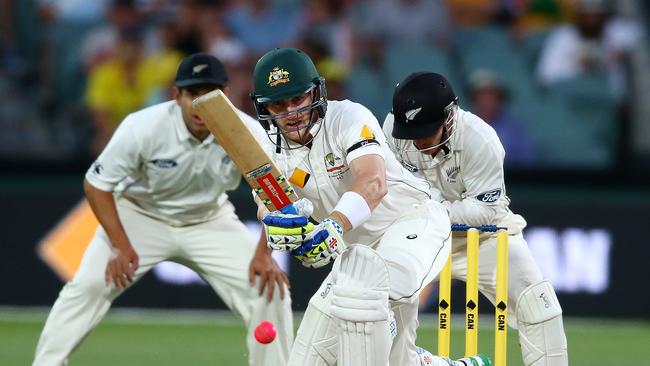Administrators need players to share their vision and those in white must get to grips with pink
DAY-NIGHT Tests are crucial to the future of cricket but administrators need to bring players along for the ride to guarantee its success, writes Ian Chappell.

Cricket
Don't miss out on the headlines from Cricket. Followed categories will be added to My News.
THERE’S no doubt that successful day-night contests are crucial to the ailing format of Test cricket.
However, it’s equally obvious that the increasingly bottom-line conscious administrators need to bring the players along with them in the crusade to make day-night Tests a viable alternative.
The consistent carping by the players about the failings of the pink ball need to be addressed by the administrators. Firstly, they need to program more pink ball first-class cricket so the players quickly adapt to the challenge and secondly, they have to address the common complaint by batsmen about the difficulty in picking up a different coloured seam.

Eventually, the extra movement (both in the air and off the seam) won’t be a problem for batsmen; the better ones will adapt. In fact a ball that helps even up the contest between batsman and bowler will be a blessing for the game.
If, however, there’s a problem picking up the seam with the pink ball because its colour too easily blends in with the surface, this is a major obstacle to good batsmanship.
While it’s crucial a batsman is closely watching the ball as it’s about to leave the bowler’s hand, the next vital point in the delivery is when it pitches. In general, the bulk of these deliveries land around five metres from the batsman and that’s precisely when he makes his shot selection.
When you consider a batsman facing a 140km/h delivery has less than half a second from the time the ball leaves the bowler’s hand to when it hits the bat, he doesn’t need a further obstacle placed in his way.
The great South African left-hand batsman Graeme Pollock once told me: “It’s a see the ball, hit the ball game.”
That is batting at its simplest but it’s bloody hard to excel when part of the ball suddenly merges with the surface just as you’re deciding where to hit it. It’s vital there’s a distinct contrast between the seam colour and that of the pitch.
The current South African team is objecting to the proposed day-night Test in Adelaide because they haven’t had enough pink ball playing experience. Adding validity to their misgivings, this is the third and possibly deciding contest of three, between two highly competitive teams.

Cricket Australia chief James Sutherland — a major proponent of day-night Tests — says: “The players have to see the bigger picture.”
He’s right and following the outstanding success of the venture in Adelaide last summer, the bigger picture could well be the difference between Test cricket living or dying.
Equally though, Test cricket must be a viable contest. One of Test cricket’s biggest stumbling blocks is the lack of evenly-matched contests and this was never more forcibly brought home than the three one-sided games against the West Indies that followed the vibrant Adelaide day-night venture with New Zealand.
Because of the inefficient way cricket is administered — a combination of the ICC and the individual boards running the game — there is increasing paranoia among the competing countries. Until the game is run by an independent body on a global basis you will continue to have countries taking a tit-for-tat approach to things like scheduling and preparation of pitches.

In this case the South Africans are within their rights to be wary. However, their cynicism shouldn’t be directed at CA for trying to gain a winning edge but more at their players’ association who need to be demanding more first-class games involving a pink ball.
The South African series is the jewel in next season’s Test summer and with the T20 Big Bash League growing ever more popular, the longer version needs all the nurturing it can get.
A deciding contest under lights at the Adelaide Oval would heighten interest in Test cricket but only if the players approach the game with full confidence in their ability to perform at peak level.
More Coverage
Originally published as Administrators need players to share their vision and those in white must get to grips with pink




